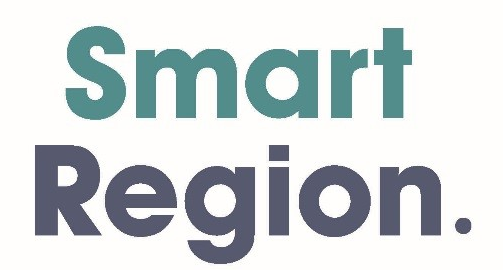Do’s and Don’ts of Social Media Engagement
Social media is a great opportunity to bond with your customers – but only if you get it right. Engaging with your customers and prospects online is really best managed as part of a communications strategy for your business. Here are some do’s and don’ts of social media engagement from some top experts:
When an irate train traveller tweeted Irish Rail to demand the reason for a holdup, he was told staff had seen an injured animal on the track and were trying to remove it. He stormed back: “Delayed for an injured animal? Why?” Irish Rail swiftly and calmly replied: “We are not in the business of deliberately running over animals.”
The response was dignified and informative, calmly explaining the situation without being defensive, and won praise across social media.
By contrast, Ryanair somewhat misjudged the mood in March this year with its response to a British Airways plane bound for Dusseldorf ending up in Edinburgh by mistake. The Irish airline tweeted a picture of a book titled Geography for Dummies alongside the caption: “Hey British Airways, we have a present for you.” BA took the comment in good humour but Ryanair’s less amused Twitter followers flooded the account with examples of when its own services had been lacking, notably the occasion its Romania-bound passengers ended up in Greece.
“Engaging with customers on social media can be hazardous,” says business social media marketing expert Greg Canty. “It’s great to interact on a personal level, but it’s a public space and you have to get it right. If it backfires, your company’s reputation can quickly be shot – all over the internet.”
So how can firms in Ireland – the European HQ of Twitter, Facebook and LinkedIn – get social media right?
DO…
Have a strategy
“Social media is an integral part of your communications strategy,” says Canty, partner at Dublin and Cork-based PR agency Fuzion Communications.
“You need to identify your audiences – customers, stakeholders, business community, recruitment – and the key messages for each group and the best platforms to reach them. Older customers tend to favour Facebook; if selling something visual to a younger market you’ll use Instagram; 93% of the media is on Twitter. Learn where your audience is to ensure maximum impact.”
Set the right tone
“Social media is not like a press release,” says Canty. “It’s magical. When you post, you invite people to like, reply or share; you open up a conversation. Hard communication – services, opening hours, contact details – is easy. But soft communication gives you opportunity to show your personality, and that’s where many companies struggle.”
Respond quickly
Two thirds of customers who contact companies on Twitter expect a response within an hour, according to a recent HubSpot survey, which also found the actual average response time was 31 hours. “Years ago you’d receive a complaint, consider a response and reply the next day,” advises business social media strategist Samantha Kelly. “Now, you must deal with it straightaway; delaying can escalate the situation further.”
“If you handle a complaint with grace, professionalism and speed, it can really enhance your reputation – especially if the customer tweets they’re happy with the outcome”
Samantha Kelly, business social media strategist
React appropriately
“Always acknowledge a comment,” says Kelly, a professional speaker under the name Tweeting Goddess, “but gauge the situation. That doesn’t automatically mean apologising. Say ‘sorry you feel that way’ to acknowledge their anger or hurt without admitting you have done wrong – especially if you haven’t.”
When an American Airlines customer complained because it had changed its profile picture to a rainbow flag in honour of Pride Month, the airline responded: “We’re sorry for your disappointment.” No need for arguments or discussion, just a polite response without undermining the company’s actions or values.
Find the right place for the conversation
Acknowledge customers’ concerns, advises Canty. “Explain the broad situation as best you can. But if this is a specific complaint, invite them to contact you by email or phone so you can resolve it privately. Social media is like the schoolyard, one whiff of trouble and everyone’s crowding around shouting: “Fight, fight, fight!”.
So take it offline, explaining you can deal with their complaint in detail while protecting their privacy.”
Have a consistent, respectful voice
“Ensure anyone monitoring your social media can give the right tone,” says Canty. “That can include humour. Some of the best business social media accounts are hilarious – but judge it right, don’t be snarky or sarcastic. Some of the biggest mistakes happen when companies give social media responsibility to younger staff. That’s okay if they are mature enough to act responsibly, but you wouldn’t give the keys of your new car to someone still learning to drive.”
Proofread everything
Even the smallest spelling mistake can be ridiculed and damage your brand.
DON’T…
Engage with trolls
“You can usually sense quickly if this is a legitimate complaint or a troll out to cause trouble,” says Kelly. “Some genuine customers can be very upset, and it’s important to distinguish these from troublemakers who like to hurt people for fun. If it’s a troll, just don’t engage. In all events, take yourself away from the emotion and don’t take any complaint personally. If you let emotion affect your response it can hamper your ability to deal with complaints properly.”
Miss opportunities
Canty recently tweeted a picture of his local newspaper and a cup of coffee, then a snap of his local park, with the words “a great way to start the day”. “By tagging in the newspaper and Cork County Council I gifted both a great PR opportunity,” he says. “But while the council tweeted its delight I was enjoying the park, and gave a shout-out to the hard-working park staff, the newspaper completely ignored me. It missed an opportunity to deepen a bond with a customer.”
He also cites the time Irish Rail used Twitter to turn the ‘Beast from the East’ into a PR triumph: “They preempted complaints about delayed trains by tweeting pictures of staff in orange uniforms out in the snow, thanking them for working hard to clear tracks with the hashtag #OrangeArmy. It made people understand the level of human effort they were making to help their customers.”
See a negative comment as a bad thing
“A complaint is often an opportunity to show your company at its best,” says Kelly. “If you handle a complaint with grace, professionalism and speed, it can really enhance your reputation – especially if the customer tweets they’re happy with the outcome.”
Delete negative comments
“It’s important for customers to see how you respond to complaints,” says Canty. “They need to see that keeping them happy is important to you.”
And finally, DO NOT…
Forget the world is watching
“You have to get it right,” says Canty. “Your response, good or bad, can be around the world in a heartbeat.
Source: business-achievers.com




